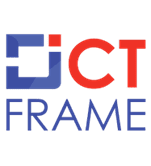Securities Board of Nepal Prepares the Preliminary Draft of the Margin Lending Directive 2082
25th November 2025, Kathmandu
The Securities Board of Nepal (SEBON) has taken a significant step toward regulating the country’s capital market by releasing the preliminary draft of the Margin Lending Directive 2082.
Margin Lending Directive 2082
This action is a crucial move in updating the regulatory framework governing the provision of credit facilities against securities, specifically through licensed institutions.
The New Regulatory Framework and Authority
This new directive is set to replace the older guidelines, standardizing practices and ensuring compliance with the Securities Act.
Legal Mandate: The new directive is being issued under the authority granted by Sub-section (1) of Section 87 of the Securities Act, 2063. This particular section empowers SEBON to issue necessary orders or directions to stock exchanges, securities business persons, and listed entities, ensuring the proper regulation and management of the capital market in the interest of investors and market stability. The issuance of this directive demonstrates SEBON’s active role in fulfilling its regulatory duties.
Supersession of Old Rules: Once the Margin Lending Directive 2082 is officially implemented and comes into effect, the previous regulatory framework, specifically the Margin Lending Directive 2074, will be nullified and repealed.
Continuity Clause: To ensure a smooth transition and maintain legal consistency, the draft includes an important clause stating that “Any work or procedures carried out under the Margin Lending Directive 2074 will be considered as carried out under this new directive.” This provision prevents legal ambiguity regarding loans and procedures initiated under the old rules, effectively grandfathering them into the new framework.
Key Areas of Anticipated Change and Impact
While the full details of the draft are subject to public review, the primary objective of revising a directive on margin lending typically revolves around managing systemic risk, promoting investor protection, and enhancing market stability. Based on general regulatory trends in the capital market, several key areas are expected to see changes compared to the older framework.
Single Obligor Limit: A significant regulatory focus in recent years has been on managing concentration risk. Recent directives from the central bank, Nepal Rastra Bank (NRB), have addressed the overall limit for a single investor borrowing against shares. The new SEBON directive may align with or further clarify the application of this limit, which has recently been subject to changes (e.g., from Rs 15 crore to Rs 25 crore total borrowing limit from all licensed institutions). SEBON’s directive is likely to address how brokerages and merchant bankers manage their exposure within this broader limit.
Margin Percentage and Calculation: The directive is expected to define the maximum loan-to-value (LTV) ratio for margin loans (the amount that can be loaned against the value of the collateral shares). While the standard has often been 50 percent of the value (based on the average price over the last 180 days or the prevailing market price, whichever is lower), the new directive may adjust this percentage or refine the methodology for calculating the share valuation used as collateral.
Eligibility Criteria: The directive will likely update the eligibility requirements for the companies whose shares can be used as collateral. Criteria typically include requirements like a minimum number of shareholders, consistent profitability, and dividend history. These requirements are periodically adjusted to weed out high-risk securities from the margin trading pool.
Risk Management and Transparency: New provisions are expected to focus on strengthening the risk management practices of licensed institutions that provide margin loans (including stockbrokers and merchant bankers). This could involve stricter rules on maintenance margin rates, margin calls, and prompt communication with investors. The goal is to enhance market transparency and reduce the risk of forced selling during periods of high volatility.
Call for Public Feedback
To ensure the new directive is comprehensive, practical, and fair to all market participants, the Securities Board of Nepal has adopted a consultative approach.
Feedback Window: SEBON has requested that all relevant stakeholders—including investors, stockbrokers, merchant bankers, listed companies, and financial analysts—submit their suggestions or feedback on the preliminary draft within a period of 7 days.
Submission Channel: The comments must be submitted to the Board’s official email address. This process allows market participants to voice concerns regarding implementation challenges or unintended consequences, ensuring a more effective final regulation.
The introduction of the Margin Lending Directive 2082 is a timely development for the Nepal Share Market, signaling SEBON’s commitment to refining financial regulations to keep pace with market growth and complexity. This final push for public input is the last step before the directive is finalized and becomes legally binding on all entities involved in margin lending against securities.
For More: Margin Lending Directive 2082








